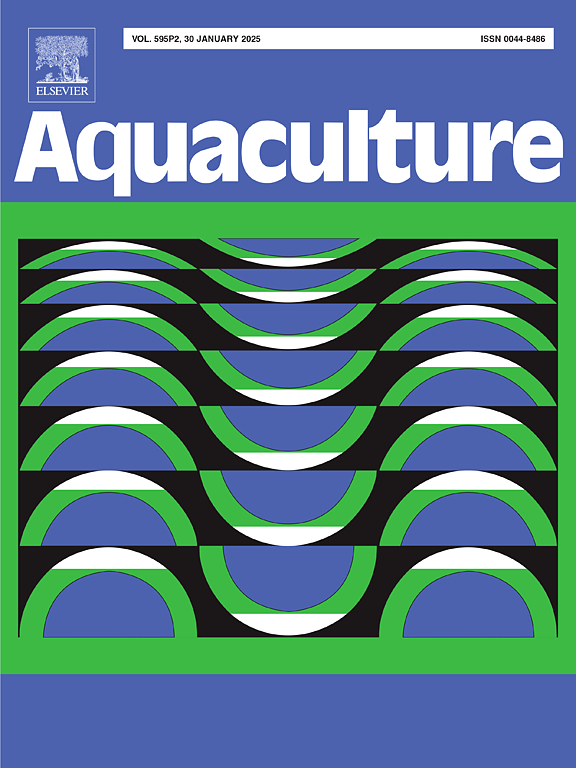An activatable aptamer probe Q2c for detection of grouper iridovirus
IF 3.9
1区 农林科学
Q1 FISHERIES
引用次数: 0
Abstract
Singapore grouper iridovirus (SGIV) severely impacts the health of marine fish species such as grouper, leading to high rates of mortality and significant economic losses. Effective monitoring, prevention, and nutritional management are crucial for controlling the disease. In recent years, activatable aptamers have emerged as promising biological probes, demonstrating great potential in the specific recognition and detection of viruses. In this study, the application and advantages of a target-activatable aptamer probe (TAA-Q2c2) in the identification of SGIV were investigated. First, the specificity of TAA-Q2c2 was established for SGIV. Then, the optimal experimental conditions were determined to be a working concentration of 500 nM, an incubation temperature of 4–28 °C, and an incubation time of 1 min. The detection sensitivity was comparable to that of RT-qPCR at approximately 103 SGIV-infected cells/mL; however, the activatable probe is more suitable for aquaculture field applications, and detection can be completed in less than two hours. In conclusion, TAA-Q2c2 enables the rapid and specific detection of SGIV, and is a promising new tool for the early detection of virus infection in aquaculture.
石斑鱼虹膜病毒可活化适体探针Q2c
新加坡石斑鱼虹膜病毒(SGIV)严重影响石斑鱼等海洋鱼类的健康,导致高死亡率和重大经济损失。有效的监测、预防和营养管理对控制该病至关重要。近年来,可活化核酸适体作为一种很有前途的生物探针,在病毒的特异性识别和检测方面显示出巨大的潜力。本研究探讨了靶活化适体探针(TAA-Q2c2)在SGIV鉴定中的应用及其优势。首先,确定TAA-Q2c2对SGIV的特异性。然后确定最佳实验条件为工作浓度500 nM,孵育温度4-28 ℃,孵育时间1 min。检测灵敏度与RT-qPCR相当,约为103个sgiv感染细胞/mL;然而,可激活探针更适合水产养殖现场应用,检测可以在不到两个小时内完成。综上所述,TAA-Q2c2能够快速特异地检测SGIV,是一种很有前景的水产养殖病毒感染早期检测新工具。
本文章由计算机程序翻译,如有差异,请以英文原文为准。
求助全文
约1分钟内获得全文
求助全文
来源期刊

Aquaculture
农林科学-海洋与淡水生物学
CiteScore
8.60
自引率
17.80%
发文量
1246
审稿时长
56 days
期刊介绍:
Aquaculture is an international journal for the exploration, improvement and management of all freshwater and marine food resources. It publishes novel and innovative research of world-wide interest on farming of aquatic organisms, which includes finfish, mollusks, crustaceans and aquatic plants for human consumption. Research on ornamentals is not a focus of the Journal. Aquaculture only publishes papers with a clear relevance to improving aquaculture practices or a potential application.
 求助内容:
求助内容: 应助结果提醒方式:
应助结果提醒方式:


